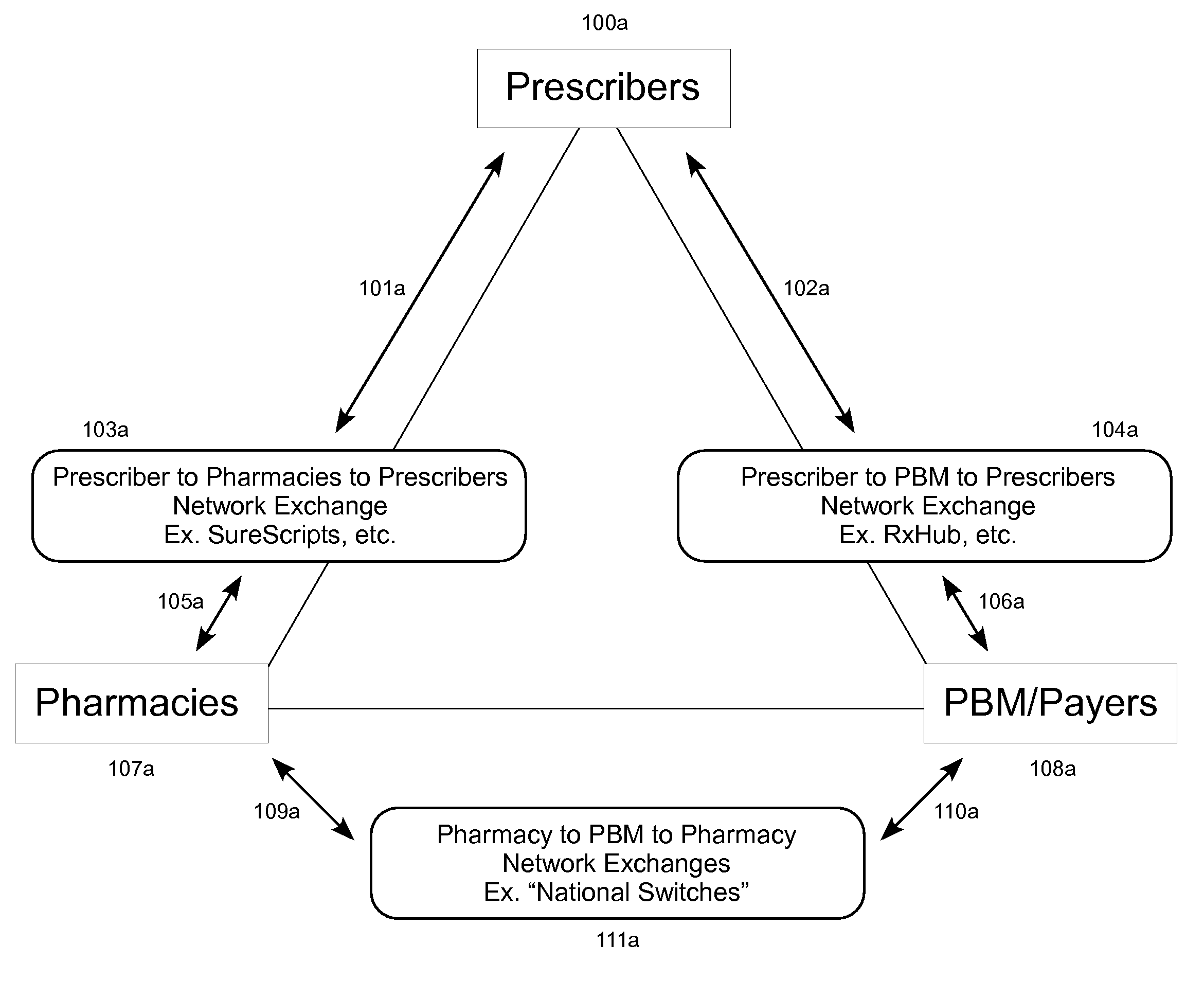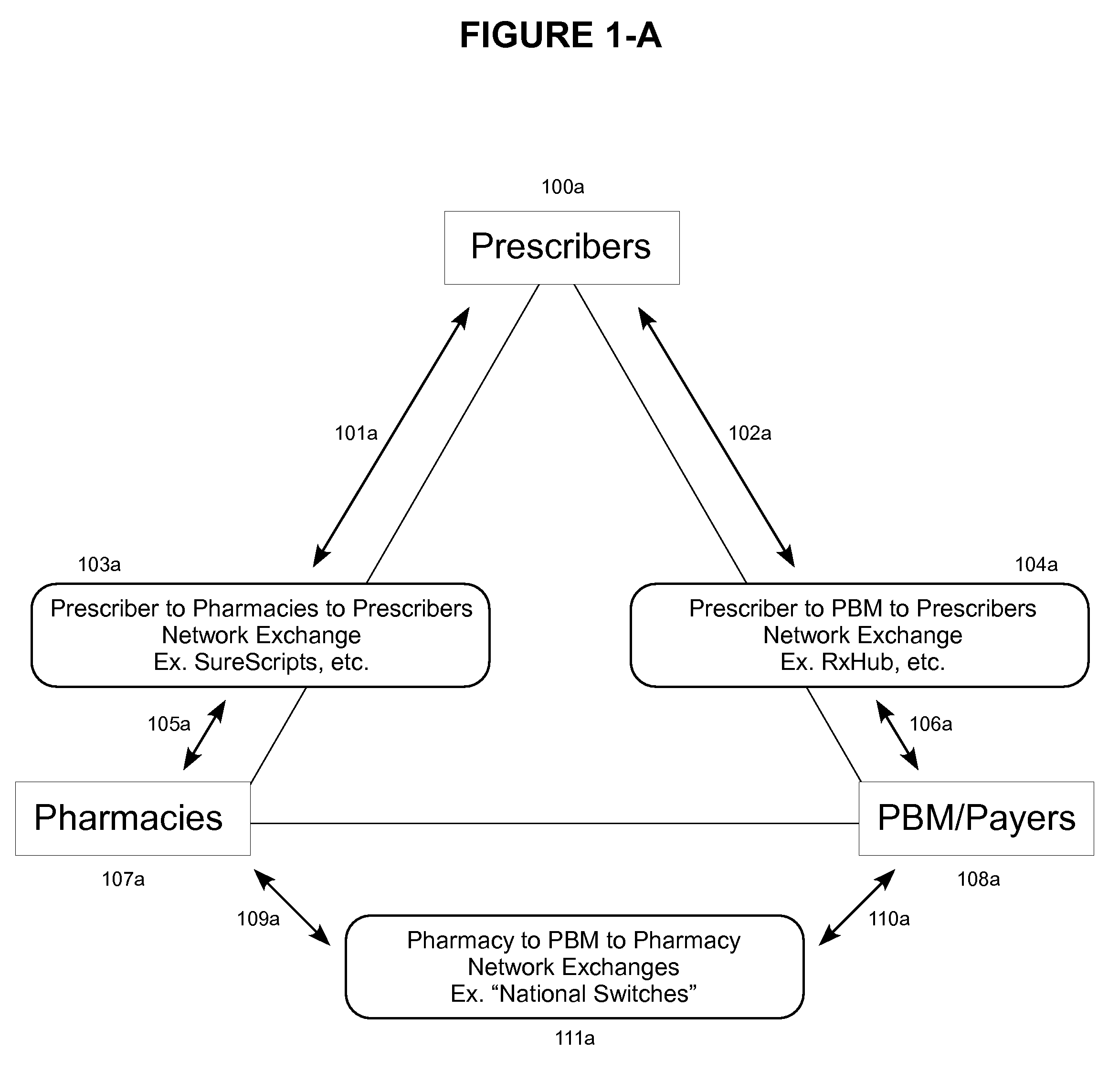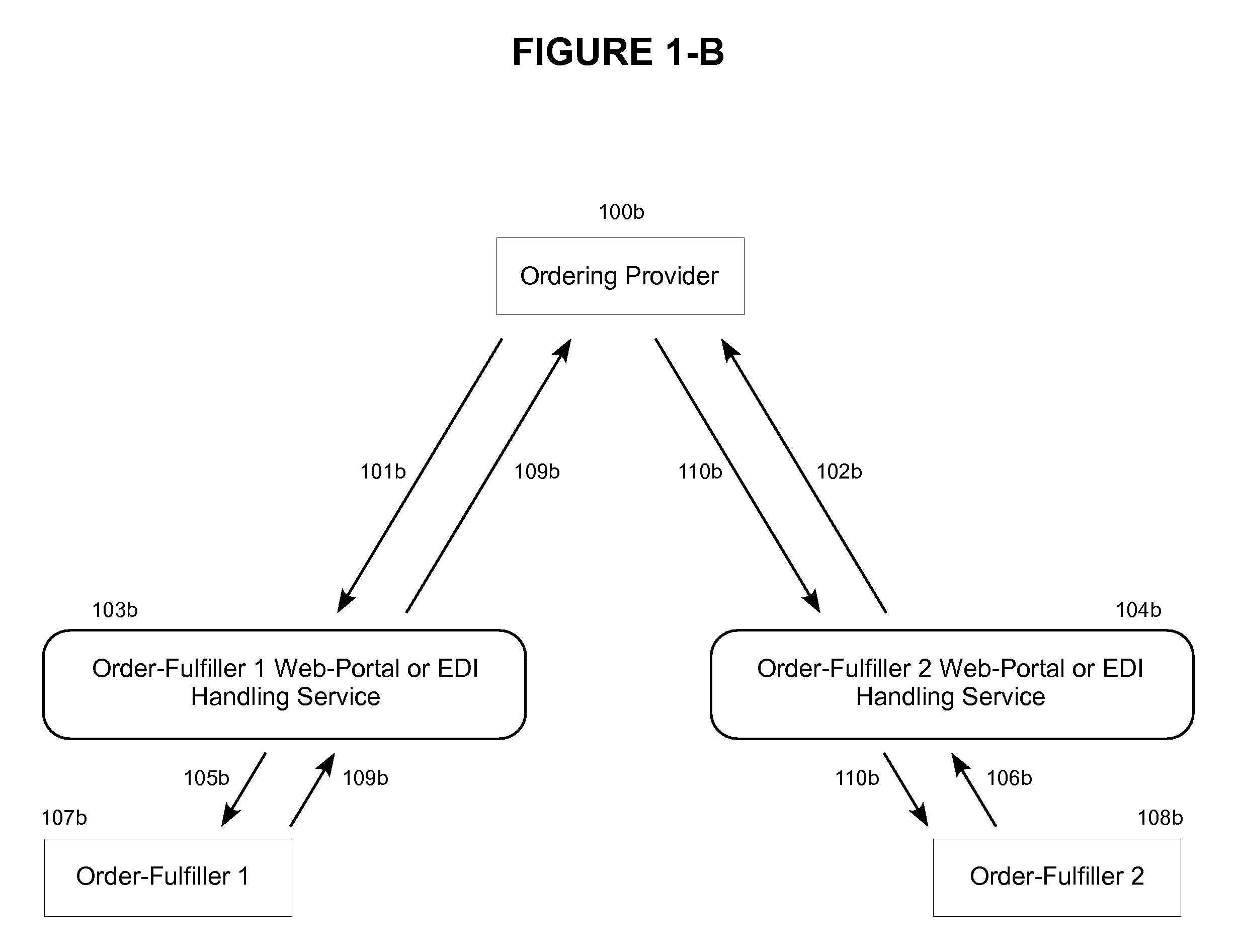[0094]A healthcare standards-based healthcare-TORTR, which can be accessed by other healthcare providers and even patients (after appropriate
authentication and / or tools are made available to them), using methods and practices compliant with applicable law and regulations, would allow providers to create orders, sign and submit these without having to identify the order's destination, while having the order removed from the providers work-
queue or pending-work
list by sending orders to the TORTR; knowingly, automatically and / or based on certain rules. Thereafter, other health care providers or ancillary professionals can search the TORTR, limited to their line-of-work, to find, “claim” and / or reposition the order into the
route the medical order usually takes to arrive at the destination of the patient's choosing or where the patient it located, using the customary and / or current
electronic transaction handling infrastructure and / or
the Internet; as if the order destination had been defined when the order was created by the ordering provider. Again, once an order is “claimed” from the TORTR, it goes back into the B2B regular transmission infrastructure, but with an appropriately designated recipient address, since the TORTR just “intercepts”, “traps” and / or “captures” orders “submitted” without destination information, or destined to the TORTR for some reason.
[0096]It is therefore the object of the present invention, the TORTR, to be available to
handle outpatient medical orders and other point-to-point messages in order to expand the capability of the existing B2B Orders and Results model (which is currently an extension of the inpatient model into the outpatient setting) to make the B2B Orders and Results model outpatient-sector friendly, compatible and malleable.
[0097]It is another intent of the TORTR to give back to the patient the decision-making “right-to-choose” and freedom to select providers they've come to appreciate and protect wholeheartedly.
[0105]Giving a patient an Order-Unique ID (such as a sheet with an order,
invoice and / or reference number or ID that identifies a patient's order) is discouraged since it continues and exacerbated the use of paper (and the patient has to carry the sheet with the ID in written and / or encoded manner); and one of the main efforts behind which electronic orders and results is to reduce or eliminate paper in the process. Also, the use of other
electronic media forms (ex. smartcards, or other writable or rewritable media) has proved to be expensive, prone to damage in
route to the ordering provider, easily lost, easily erased, and mostly not supported by patients accustomed to more traditional means of data-
relay from one point to another or simply depending on the advances, ease and benefits of
electronic data interchange. Finally, memorizing a code or ID by the patient is highly uniquely to work in, and for, the vast majority of the
population.
[0108]Nonetheless, since the technologies to accomplish this feat are standard and
open source products available to anyone, the TORTR / invention is NOT pursuing nor “claiming” anything upon the aforementioned openly available techniques and technologies used to search for orders and / or individuals temporarily stored in TORTR without using a Unique ID code, but rather we state that we use and incorporate such technologies to achieve the effect desired, and eliminating the need for a Unique ID Code to do order searches in TORTR.
[0116]Another situation that hardly occurs since performing it is extremely complex and time-consuming in a non-electronic environment, is that of inquiring several product and / or service providers about their products and / or services before committing a patient to a particular provider (such as “Order-Undergoing-Inquiry-Before-
Commit” or OUIBC). Taking ePrescribing again as one of a multitude of examples, many times providers and / or patients have to research various pharmacies to identify which one has the medications ordered in-stock and in sufficient quantities, determine the final price to the patient, etc. The TORTR will improve such scenarios, and could even promote them, by allowing orders to be submitted as “inquiries” (the order's status would not be that of “unclaimed”, but rather of an “OUIBC”) to various potential pharmacies, and depending on the reply's received, the most beneficial
pharmacy for the patient can be defined as the electronic prescription destination; either by the ordering provider and / or by the patient visiting such order-fulfillment provider.
 Login to View More
Login to View More  Login to View More
Login to View More 


